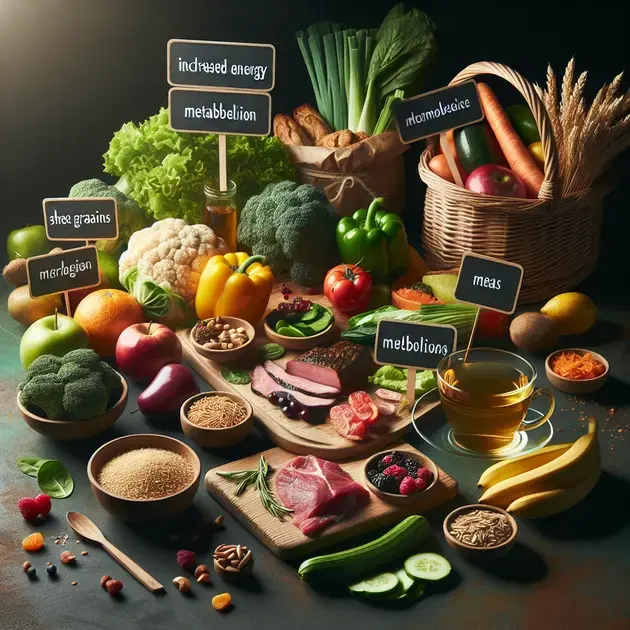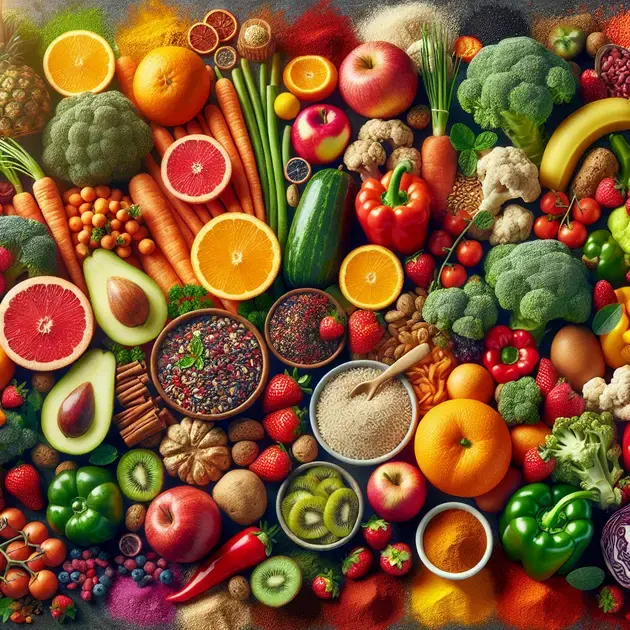Are you looking to rev up your metabolism? Including specific foods that boost metabolism in your diet can help you achieve your goals. Metabolism plays a significant role in weight management and overall health, making it essential to incorporate metabolism-boosting foods into your meals.
Recent studies have shown that certain foods have the ability to increase the body’s metabolic rate, leading to improved calorie burn and energy levels. By understanding the impact of these foods that boost metabolism, you can make informed choices to support your health and wellness journey.
Boost your metabolism with these powerful foods
Eating the right foods can significantly boost your metabolism and help you burn more calories throughout the day. To enhance your metabolism, incorporate these powerful foods into your daily diet:
1. Spicy Foods
Spicy foods like chili peppers contain a compound called capsaicin, which can increase metabolic rate and help with fat burning. Consider adding hot peppers to your meals or using hot sauce to spice up your dishes. Apps like “MyFitnessPal” can provide recipes and meal suggestions that incorporate spicy ingredients to boost your metabolism.
2. Green Tea
Green tea is rich in antioxidants and catechins, which are known to increase metabolism and promote fat oxidation. Start your day with a cup of green tea or incorporate it into smoothies for an added metabolism boost. Use apps like “TeaTime” to discover different types of green tea and the best ways to include it in your diet.
3. Lean Protein
Protein-rich foods like chicken, fish, tofu, and legumes can help boost your metabolism due to the thermic effect of food. Aim to include lean protein sources in every meal to support muscle growth and improve metabolism. Websites like “Eat This, Not That!” provide lists of metabolism-boosting foods rich in protein and offer delicious recipes to try.
4. Berries
Berries such as blueberries, strawberries, and blackberries are packed with antioxidants and fiber, which can aid in metabolism regulation and improve digestion. Enjoy a serving of mixed berries as a snack or add them to your breakfast oatmeal or yogurt. Apps like “MyPlate” can help you track your berry intake and suggest creative ways to include them in your diet.
5. Whole Grains
Whole grains like quinoa, brown rice, and oats are excellent sources of complex carbohydrates and fiber, which can boost metabolism by regulating blood sugar levels and enhancing satiety. Replace refined grains with whole grains in your meals to support energy levels and improve metabolism. Websites like “Healthline” offer detailed guides on the benefits of whole grains and how to incorporate them into your diet.
**Top Foods for Increasing Energy Levels**
Fruits and Vegetables
Consuming a variety of fruits and vegetables is essential for increasing energy levels. These foods are rich in vitamins, minerals, and antioxidants that help to combat fatigue and boost overall energy. Berries, citrus fruits, leafy greens, and cruciferous vegetables are particularly beneficial for energy-boosting properties. Including a rainbow of colors in your diet ensures that you are getting a wide range of nutrients to support energy production.
To incorporate more fruits and vegetables into your diet, aim to fill half your plate with these foods at each meal. Snacking on fresh fruits and veggies throughout the day is also a great way to maintain steady energy levels. Smoothies, salads, and stir-fries are delicious and convenient ways to enjoy a variety of fruits and vegetables in your meals.
By prioritizing fruits and vegetables in your diet, you can naturally increase your energy levels and support overall health and well-being. These nutrient-dense foods provide a sustainable source of energy that will keep you feeling energized throughout the day.
Whole Grains
Whole grains are another excellent choice for boosting energy levels. Foods like quinoa, brown rice, oats, and whole grain bread contain complex carbohydrates that are digested slowly, providing a steady release of energy. These foods also offer fiber, vitamins, and minerals that support optimal energy production and metabolism.
To incorporate more whole grains into your diet, swap out refined grains for whole grain options whenever possible. Start your day with oatmeal or whole grain toast, and include quinoa or brown rice in your meals instead of white rice or pasta. Snacking on whole grain crackers or popcorn can also help to sustain energy levels between meals.
By choosing whole grains as a staple in your diet, you can maintain stable energy levels and support your metabolism. These foods are a nutrient-rich source of energy that can keep you feeling fueled and focused throughout the day.
Conclusion
Incorporating a variety of fruits and vegetables into your daily meals is crucial for enhancing energy levels. These colorful foods are packed with essential vitamins, minerals, and antioxidants that combat fatigue and promote overall vitality. Berries, citrus fruits, leafy greens, and cruciferous vegetables stand out for their exceptional energy-boosting properties, offering a diverse array of nutrients to fuel energy production.
To amplify the presence of fruits and vegetables in your diet, strive to make them the focal point of your plate during meals. Additionally, snacking on fresh produce throughout the day can help maintain a consistent level of energy. Whether through smoothies, salads, or stir-fries, there are numerous delicious and convenient ways to enjoy the benefits of these nutritious foods, ensuring sustained vitality.
By emphasizing the consumption of fruits and vegetables, individuals can naturally elevate their energy reserves and bolster their overall well-being. These nutrient-dense options serve as a reliable energy source, enabling individuals to stay invigorated throughout the day and support their holistic health.

